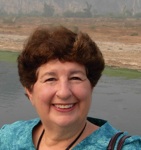“There is writing on that blackboard!”
“Hey, those people on stage have features on their faces!”
“I don’t really have to read the newspaper from across the room!”
These are common enough reactions to a new pair of eyeglasses, especially to that first prescription. But in many parts of the world—and for many people in this country—the cost of prescription eyeglasses is prohibitive.
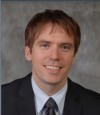
When Jeffrey Lynch travelled to Peru in 2006 as a medical student on a mission trip to perform eye surgeries, he realized that most of the people who came to the clinic with eye problems just needed eyeglasses. However, in the area he visited, only the wealthy could afford to have their prescriptions filled. In fact, the World Health Organization estimates that about 280 million people in the world have low vision (moderate to severe impairment) and that glasses could correct the sight of more than half of them.
Many medical missions travel with boxes of donated eyeglasses, but the chance of finding a pair of glasses in those boxes with correct prescription match and acceptable style frames is slim.
ReSpectacle Saint Louis Drop-Off Sites for Eyeglasses
- Optical Shop SSM St. Claire’s
1015 Bowles Avenue
Fenton, MO 63026 - St. John’s Mercy Eye Care
6650 Chippewa St.
Saint Louis, MO 63109 - Clarkson Eyecare LASIK
17249 Chesterfield Airport Rd
Chesterfield, MO 63005 - Clarkson Eyecare LASIK – Surgery Center
10 Lincoln Highway
Fairview Heights, IL 62208 - Complete Eye Care, Inc.
9890 Clayton Road
Ladue, MO 63124
Lynch thought there could be a more efficient way to match underserved patients with glasses they needed. A twenty-first century solution was needed. So several years later, while a resident in Saint Louis University’s ophthalmology program, he worked with fellow resident and current ophthalmology fellow Aaron Grant to create an algorithm to find and rank the best matches between an individual prescription and the stock of donated eyeglasses.
Ford Parsons, a SLU medical student, designed and built the website with that algorithm, and ReSpectacle was born in 2011 as a 501(c)(3) non-profit organization.
The site is extremely user friendly. It opens to two buttons marked “Donate” and “Browse.”
Press the Donate button and find a drop-off collection site is near you, or an address for mailing the glasses.
Press the Browse button, enter the prescription, and see if the current inventory of about 3000 glasses has a prescription closely matching yours in a frame that will work. Both individuals and health care providers can use the site. If there is a close match, the site notifies Lynch who gets the glasses sent out from wherever the computer tells him they are warehoused.
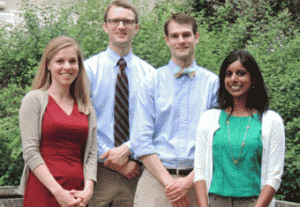
Photo provided by Saint Louis University
Anusha Vasamsetti, ophthalmology resident and current ReSpectacle site director at Saint Louis University explained how donated glasses are classified. “Every few weeks on a Saturday afternoon, the volunteers—usually residents and medical students—get together to process the glasses. Each one is cleaned, has its prescription read in a lensometer, is photographed, and given a serial number. The information is uploaded to the site, the glasses are put in a Ziploc bag with their serial numbers, and stored in numerical order.”
As of March this year, 147 pairs of eyeglasses had been sent locally, and 182 internationally. Because of shipping expense, the international shipments go through a contact. For example, an ophthalmologist in Kenya scans the site every few months to match the needs of his patients, and then arranges for a bulk shipment. Several medical missions have been doing the testing on site, photographing the patients, and then filling the prescriptions as much as possible from the database.
“It’s efficient, it’s recycling and therefore environmentally sound, and it’s practical,” says Vasamsetti.
The current need is to expand the inventory. Vasamsetti and Lynch give presentations such as Lynch’s at“Unite for Sight” recently held at Yale University, and get good response. Then, the number of chapters with their own collection routines will double this summer, when several currently active residents move on to different cities. Vasamsetti will be starting a chapter in Chicago.
“We are excited about our organization’s potential to harness the power of the internet to help reach medically underserved communities,” says Lynch. “We think this will be just one example of the ways medicine in changing in the digital age.”
Other local approaches to helping those with low vision
In this area, several other organizations are helping the underserved get the eyeglass correction they need.
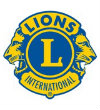 For years, Lions Clubs have emphasized vision in their philanthropic work. Missouri’s chapters are known for their Eye Research Foundation at the University of Missouri, screening for young children that detects amblyopia (lazy eye) as well as vision defects correctable with eyeglasses, and financial help for adults who cannot afford eye care.
For years, Lions Clubs have emphasized vision in their philanthropic work. Missouri’s chapters are known for their Eye Research Foundation at the University of Missouri, screening for young children that detects amblyopia (lazy eye) as well as vision defects correctable with eyeglasses, and financial help for adults who cannot afford eye care.
They also collect unused prescription glasses at sites such as Walmart and some Schnuck’s stores. 60,000 of these collected annually are distributed to various organizations that do overseas medical missions.
One program that distributes the Lion’s glass collections is VOSH (Volunteer Optometric Services to Humanity), with a chapter at the University of Missouri School of Optometry. Like ReSpectacle volunteers, these students get together regularly to clean donated eyeglasses, read prescriptions in a lensometer, and catalog them. Students who have put in thirty hours of this work are eligible to go on VOSH eye-care missions around the world.
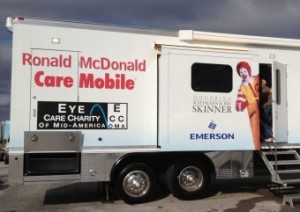
Eye Care Charity of Mid-America has recently partnered with Ronald McDonald House charities for a different approach to getting eyeglasses to children who cannot afford them. As the clinical care provider for Ronald McDonald Care Mobile® their optometric volunteers drive a van with exam lanes, a dispensary area, and a lab. Two or three times a week a volunteer optometrist drives the van to a school site and examines children the school nurse has previously identified with a vision problem. The child picks a frame that has been provided gratis by manufacturers from the dispensary, and fits a pre-ground lens provided by Midland Optical into the frame.
The American Optometric Association for 20 years has been connecting its 300 volunteers with those who cannot afford eye care. Application instructions can be found on their website.
The Good News—and the Good News
The first good news is that in this metropolitan area, those who need it should be able to obtain quality eye-care through one of the organizations described above, or at University Clinics.
The second good news is that those useless prescription glasses –as well as sunglasses and readers—can leave the drawers and be recycled in a meaningful way. Someone’s pre-cataract surgery glasses may be just the prescription for an aging worker in Congo.
The creation of ReSpectacle’s database shows one way the internet is being used to improve medical care on a worldwide, yet individual basis. As Lynch puts it, “We hope our model, by using technology that is available essentially everywhere now, would increase the numbers of people who could benefit from correction of refractive error.”
This article was originally published in the St. Louis Beacon.
